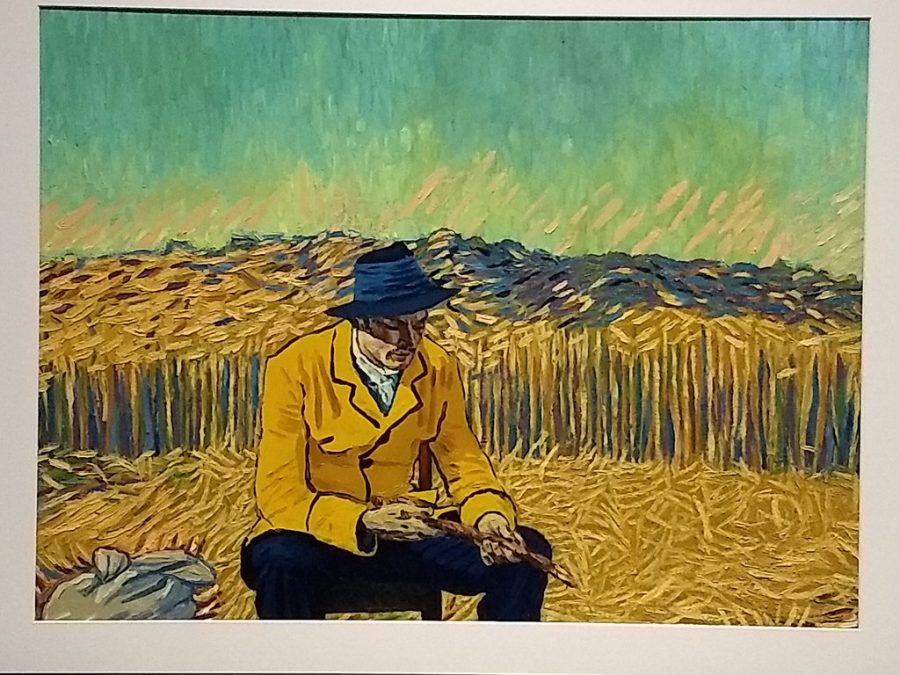‘Loving Vincent’ revolutionizes the art of storytelling
Just one of the 65,000 frames that make up “Loving Vincent” equates to hours of meticulous work.
September 30, 2021
Based on true testimonies and the real-life madness of Vincent van Gogh, “Loving Vincent” is the world’s first fully-painted feature film, making it a contemporary masterpiece in both storytelling and animation.
The plot explores the peculiar death of van Gogh, a painter who did not become widely known until long after he was gone. Set in the year 1891, a year after van Gogh’s death, Armand Roulin (Douglas Booth) sets off with a letter van Gogh wrote to his brother, Theo van Gogh (Cezary Lukaszewicz). Because Armand’s father is Postman Joseph Roulin (Chris O’Dowd), he feels a sense of importance to deliver this unopened letter, written just days before van Gogh’s death. As the story unravels, Roulin comes to understand the personal experiences that the townspeople of Auvers-sur-Oise, France, had with van Gogh in his final days. As more pieces of van Gogh’s death reveal themselves to Roulin, he wonders if the artist’s death was even suicide, as it is labeled to be.
Not only does “Loving Vincent” push a driving narrative of a troubled life, but it also features an animation style that has never been attempted in the history of animation, nor the rich history of cinema. The entire motion picture is hand-painted, in the same style that van Gogh is so known for; it included a complicated process of filming the actors in a studio, designing their character’s style, hand painting every frame of the film and recording a voice-over for each piece of dialogue. Every frame is a masterpiece, closely edited together to propel the visuals into complete amazement. Words cannot elucidate the absolutely breathtaking beauty that this film possesses in every detailed frame. The six years poured into the production of this film truly shows in every millisecond of the one hour and 35 minutes shown on screen.
This 2017 film was compiled mainly in Poland and constantly had to pause production due to a lack of funding. It is easy to see why this independent picture was expensive, but every minuscule part was necessary to make it the revolutionary arthouse film that it is.
“Loving Vincent” also received a copious amount of critical acclaim, achieving 23 awards and 53 nominations. Among these escalades is a nomination for best-animated feature film at the 2018 Oscars, an extreme honor for any film, especially an independent one.
Before watching this film, many may think of van Gogh as a madman, but after discovering the true stories and events of van Gogh’s shortened life, many initial opinions may be swayed. “Loving Vincent” not only exposes the empathy and curiosity of the viewer but also transcends all visual standards with dazzling artistry.









